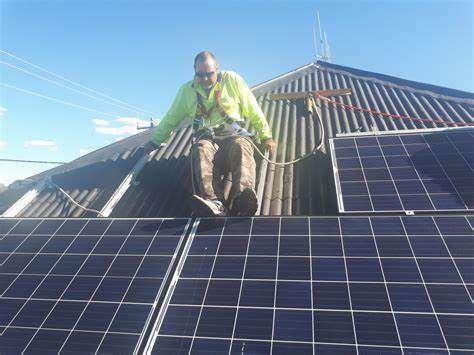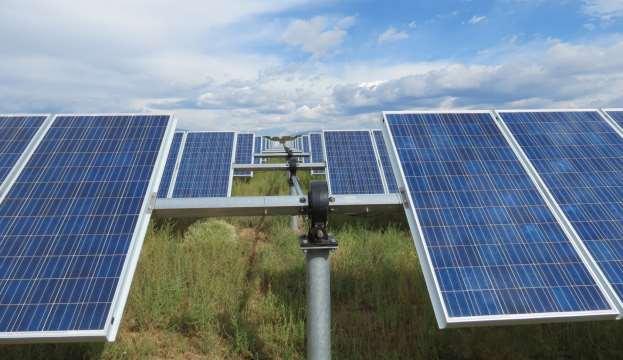PV Tracker Systems Boost Energy Generation

Probably the most energy serious activities managed by the Massachusetts Department of Corrections (DOC), including remedial offices, a wastewater treatment plant, and a MCI businesses tag office, are presently powered by environmentally friendly power in Norfolk and Middlesex districts. Five solar electric system establishments spread all through four towns give the necessary resources to balance the electrical utilization of these state-claimed activities. The systems were made conceivable by subsidizing from the American Recovery and Reinvestment Act and the Massachusetts Leading by Example program.
Solar Design Associates worked with the DOC offices director to choose four locales on which PV trackers could work unhindered all year. Despite the fact that tracker systems can have a higher starting expense than a proper slant system, the four single-axis PV tracker systems introduced at Massachusetts DOC locales in Shirley, Concord, and Norfolk give around 14% more yearly energy yield than would a 25° fixed-slant ground mount PV system of a similar size. Each column of modules is driven from east to west over the course of the day by a focal engine. The entire system is constrained by a focal box that ascertains the place of the sun all through the year in view of the GPS directions of the site.
Understanding solar tracking systems for PV power plantsSolar module tracking systems are mechanized mechanical racking systems that situate a solar exhibit towards the sun. A tracker improves the place where boards get solar radiation consequently augmenting power creation of a solar plant. The place where the sun's beams meet the outer layer of the solar board decides how well the board can change over the approaching light into power. This is known as the "point of occurrence". The smaller the point of frequency, the more energy a photovoltaic board can create. Solar trackers help to limit this point by attempting to arrange boards so that light strikes opposite to the outer layer of the boards Mibet.
Kinds of solar trackers
There are essentially two sorts of solar tracking systems, in particular single-axis and double axis. A single-axis tracker moves the solar boards on one axis of development, which permits the boards to bend from east to west and track the sun as it travels through the sky. A double axis tracker permits board development on two tomahawks, adjusted for both north-south and east-west. This sort of a system is intended to additionally boost solar energy assortment all through the year as it not just tracks the day to day east-west movement of the sun yet in addition adapts to occasional variety in the way of the sun.
Advantages and disadvantages of solar trackers
The greatest advantage of a solar tracking system is that it offers a lift in power creation when contrasted with a comparable estimated static solar plant. For the most part, a plant introduced with a single-axis solar tracker sees a presentation gain between 20 to 30 percent. A double axis tracker further increments execution up by one more 5 to 10 percent. And that implies a double axis tracker system increments execution productivity by up to 40%. Particularly, in high scope places where the sun's situation overhead fluctuates emphatically among summer and cold weather months, a double axis tracking system is a powerful method for boosting solar creation PV Tracking System .
However trackers are an incredible system for expanding the energy yield from a PV plant, there are a couple of contemplations to remember. Tracking systems draw in significantly higher establishment and support costs over static solar plants. A solar tracker will cost more cash since it is a mind boggling innovation and has moving parts. With a more perplexing system comes more upkeep, which accumulate in cost after some time.
One more drawback of a solar tracker is that they are not feasible for roof solar establishments, which is generally described by lower establishment cost and simplicity of upkeep. Additionally, since tracking expects boards to be counterbalanced a critical separation from one another to take into consideration development. This significantly restricts the number boards that can be introduced as well as make the system excessively weighty for housetop applications.
The eventual fate of solar tracking systems
Solar trackers offer the best incentive in enormous ground-mounted solar establishments, particularly in high scope places where there is broad variety in the way of the sun among summer and winter. In these enormous business projects, the drawn out advantage of expanded creation is to the point of counterbalancing the underlying venture cost and support costs. Nonetheless, as solar boards get less expensive, the expense adequacy of tracking systems as opposed to utilizing a more noteworthy number of boards diminishes. In the past when photovoltaic modules were similarly more costly, and it seemed OK to limit the quantity of boards utilized in a plant with a given power yield. Please visit here https://www.mbt-energy.com/ for more details.


